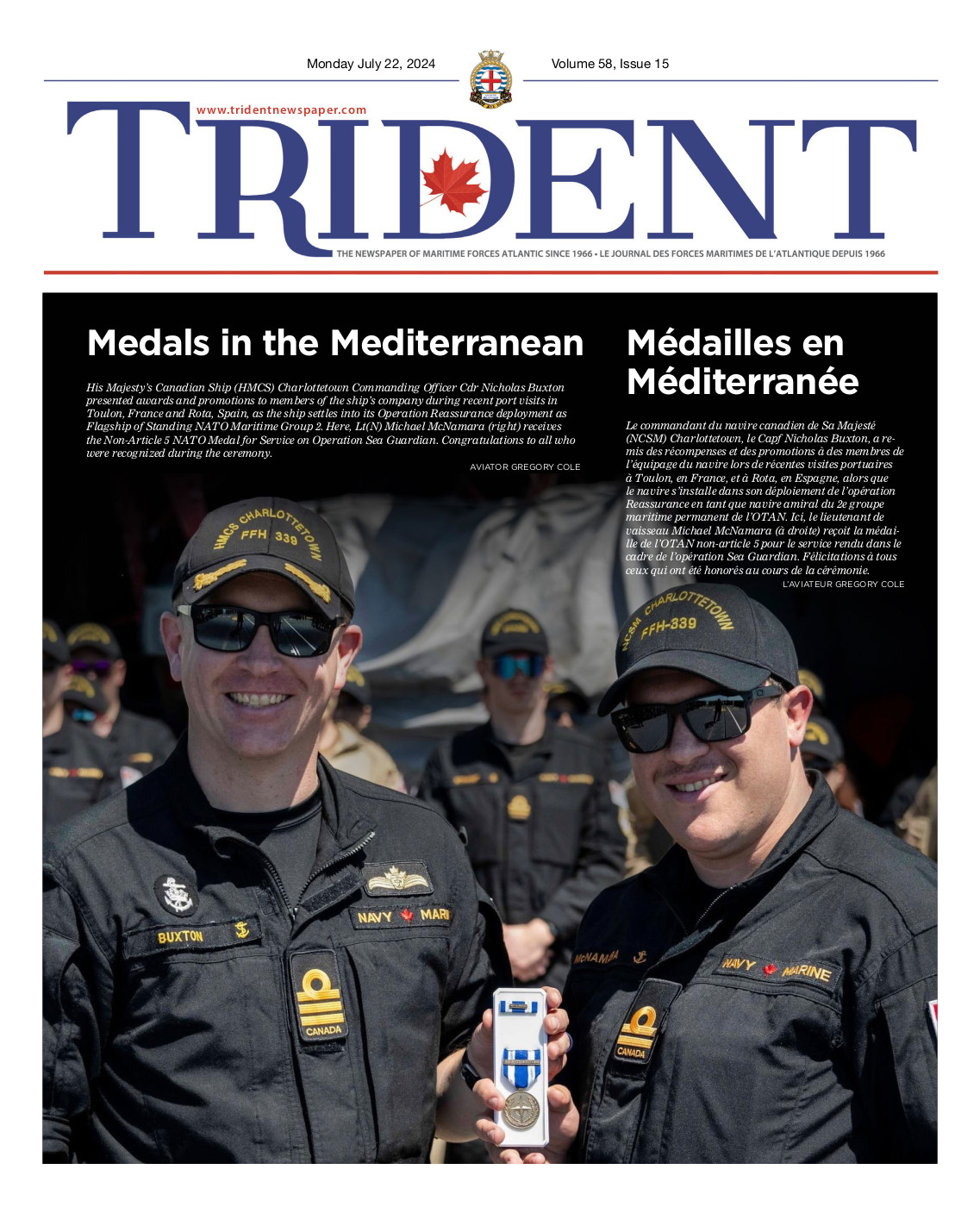Royal Naval Dockyard, a Bermuda gem
By Cdr (ret’d) Len Canfield,
Canadian Naval Memorial Trust
Nova Scotians visiting the Royal Naval Dockyard complex in Bermuda will probably be struck by the similarity with HMC Dockyard and Stadacona in Halifax.
Not surprising, Nova Scotia and Bermuda share a similar history of European settlement and the influence of the British Royal Navy on the development of the province and the 21-mile long island. While European settlement in Acadia/Nova Scotia took root in 1605 at Port Royal, Bermuda’s first British settlement had its origins in 1609 when Admiral Sir George Somers and his crew were shipwrecked on the island en route to Jamestown, Virginia.

Photo: LEN CANFIELD
Bermuda’s early settlement and fortifications began at the east end of the island (St George’s Parish) where Sir George and his crew first ‘came ashore.’ It was also this part of the island that played an important role in supporting Allied naval and air operations during the Second World War.
In 1944 the Royal Canadian Navy, with an expanding fleet and a major player in the Battle of the Atlantic, commissioned the stone frigate HMCS Somers Isles (a former RN base) as a year-round work-up base. Among the ships dispatched for training was HMCS Sackville after she had undergone a major refit at Galveston, Texas in early 1944. As naval historian Marc Milner has written, “Sackville trained in the azure blue seas of Bermuda for three weeks of work-ups,” sailing out of St George’s Harbour.” But it was at the western end of Bermuda, and notably Ireland Island, that the Royal Navy presence was most prominent in the form of the Royal Naval Dockyard (construction began in 1809, 50 years after its Halifax counterpart was started). In the 20th century, the Dockyard and nearby Daniel’s Head on Somerset Island would also have a significant Canadian presence from the 1950s to 1993.
When Britain turned over the Dockyard to the Bermuda government in 1951 a Canadian Forces Liaison Office was established and over the years RCN ships regularly visited Bermuda with Canadian sailors participating in exercises and training involving the Dockyard and nearby US Navy facilities. LCdr (ret’d) Doug Thomas, executive director of the Canadian Naval Memorial Trust has some fond memories of Bermuda while serving as a young officer in HMC Ships Fraser, Terra Nova, Margaree and Iroquois between 1968 and 1985 and training in Bermuda (‘Bermadoo’ in naval speak). “Training in Bermuda, a nice two day sail south from Halifax, was particularly welcome in April and May when the island was more spring-like than Nova Scotia,” Thomas recalls. At the same time, once alongside and shore leave granted, he also recalls as officer of the day (OOD) having to deal with younger sailors and their moped misadventures that often resulted in Bermuda road rash (scrapes, bruises, etc) possibly generated by the popularity of a well-known Bermadoo liquid refreshment.
In 1961 (during the Cold War era) the Canadian government approved establishment of a communications (HFDF) installation. This included a transmitter facility on Ireland Island and a receiver facility at Daniel’s Head. With a long-term lease on land and former RN buildings at Daniel’s Head the RCN developed an international communications and anti-submarine tracking establishment. Initially known as Naval Radio Station (NRS) Bermuda, it was renamed Canadian Forces Station (CFS) Bermuda in 1969 following unification of the Canadian Forces and was transferred to Communications Command. In the following years a number of upgrades and additions were carried out at the site before the Canadian government announced the station would close in 1993. At that time CFS Bermuda had grown to more than 200 military and family members. Following the station closure the site reverted to private development, including a resort (which later closed).

Photo: LEN CANFIELD
Today, the RN Dockyard is promoted as one of the island’s most popular tourist attractions: “In its heyday the Dockyard provided facilities for the RN’s fleet, supported a thriving naval and civilian community and provided trades training for Bermudians.” The various buildings support a range of activities and museums, arts and crafts markets as well as food and beverage services. But for the history minded the fortress Keep with its ramparts and bastions—designed to protect the Dockyard–and the dominating Commissioner’s House are a must see.
The three storey Commissioner’s House was built in the 1820s (using prefabricated cast-iron steel) for the civilian commissioner of the Dockyard. It has a commanding view of the surrounding area, contains extensive military and civilian collections and operates as the National Museum of Bermuda. One is quickly reminded of Admiralty House (1819), home of the Naval Museum of Halifax. The ground level contains various displays and artifacts depicting Bermuda’s defence heritage from the 17th century through to the present. One section of particular interest to Nova Scotians contains display panels depicting Bermuda’s role during the Second World War including serving as a major Allied naval base for assembling merchant shipping into trans-Atlantic convoys (like the ports of Halifax and Sydney) and as a vital mid-point in the trans-Atlantic cable communication system.
Among the displays is a model of HMCS Sackville, the last remaining of the Allies’ 269 wartime corvettes. On the main level is another reminder of the historic Nova Scotia-Bermuda linkage. Mounted on the wall are several display panels bearing the names of Commanders in Chief on the North American and West Indian Station starting with Commodore Samuel Hood in 1767 (18 years after Halifax was established). The names recall the period when the senior Royal Navy officer in the Northern Hemisphere summered in Halifax (Admiralty House) and wintered in a warmer Bermuda.





